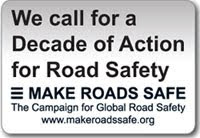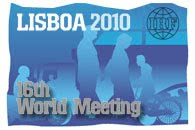WHAT DOES TRAFFIC SIGNALS INDICATE?
Tuesday, April 27, 2010
RED means STOP
Wait behind the stop line or cross walk.
If there are no lines, stop before the traffic light at the intersection so that traffic light is clearly visible.
Wait until a green signal appears before proceeding.
AMBER means CAUTION
You may move on if the amber appears after you have already crossed the stop line or when you feel that your stopping may cause accident. Anyhow be careful.
GREEN means GO
Proceed ahead ensuring that the way is clear
You can make a right or left turn if not prohibited by signs, but take special care and give way to pedestrians crossing the road.
FLASHING RED
Generally provided at level crossings, bridges, airfield, fire stations, minor roads, etc.
It means you must come to a full stop and proceed cautiously after making a safety check on all approaching traffic.
FLASHING YELLOW
Generally provided where major roads meet minor roads.
Slow down and proceed with caution, giving due attention to other traffic and pedestrians.







